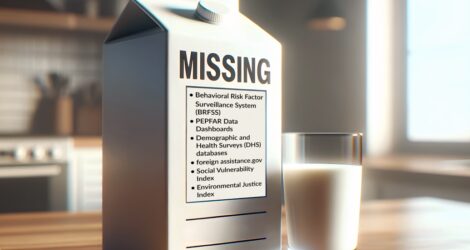Balancing Cost and Care: How to Manage Soaring Part D Expenses While Improving Health Equity

The rapid growth in Medicare Part D costs, fueled by benefit changes, soaring specialty drug prices, and continued specialty drug utilization, presents a dual challenge and opportunity for health plans. The scenario not only pressures budgets, but also offers an opportunity for plans to improve member health and achieve advances in health equity, while simultaneously mitigating costs.
Consistent use of expensive specialty drugs is a major factor contributing to rises in Part D costs. A brief from ASPE on trends in prescription drug spending shows a 43% increase in the cost of specialty drugs from 2016 to 2021, totaling a staggering $301 billion. This is largely due to increasing specialty drug prices, rather than increased utilization. Notably, 80% of prescriptions filled in the U.S. are for generic drugs, yet brand name drugs still account for 80% of total drug spending.
Looking ahead, the 2023 Medicare Trustees Report projects ongoing rapid growth in Part D expenses paid by plans through 2026 driven by the benefit enhancements of the Inflation Reduction Act (IRA). Estimates forecast a significant increase in Part D costs paid by plans, with costs jumping 20% by 2026. This is largely driven by further reductions in the annual out-of-pocket cap on members’ prescription drug costs to $2000 by 2025. Changes to Part D Benefits will continue to compound cost increases for plans through 2026, but price negotiation could provide some relief in 2027.
With Part D costs continuing to rise, here are some effective ways plans can balance cost with care to manage expenditures while simultaneously promoting health equity.
Mail Order and Days’ Supply
Mail order isn't just a cost-effective way for members to get necessary medicine; it's also an effective way to boost medication adherence, thereby improving Star ratings. For members affected by Social Determinants of Health (SDoH) like transportation challenges, getting medication by mail order can dramatically improve access. On top of mail order, managing a member’s days’ supply can offer additional cost savings. For members who are new to a specialty drug, cannot efficiently store a large supply, and/or will not be using a medication for an extended period, limiting their days’ supply can reduce waste and cost. Conversely, if a member has successfully been using a specialty drug, will continue to use it and can properly store a bulk amount, it is more cost-effective to shift them from 30 to 90-day supply. In any case it is important to balance the benefits of cost-savings with potential effects on access to care.
In-Home Care and Site of Care Management
It is more expensive for members to receive specialty drugs, such as infusions, at a hospital than in a physician’s office or their home. According to a study by the American Health & Drug Benefits Journal, some specialty drug costs are 110% higher at outpatient facilities compared to alternate treatment sites or at-home infusions.
By offering interventions such as transportation or in-home care, health plans can not only help members get the care they need, but also guide them to the most appropriate, cost-effective sites of care. Educating members about these alternatives is an effective way to mitigate specialty drug costs, and like enrolling in mail order, receiving services at home improves access to care, health equity, and in turn, can boost Star ratings.
Medication Therapy Management and Step Therapy
Implementing step therapy is an important strategy for ensuring members are prescribed only the medications they need, while also exhausting the most cost-effective options. Alongside step therapy, it's vital to enroll all qualified members in a medication therapy management (MTM) program and ensure they undergo a comprehensive medication review (CMR).
Drug Switching
Often, members can save money by switching their brand name prescriptions to a lower-cost, equally effective alternative generic. Similar cost-saving can be achieved when members switch from specialty drugs to bioequivalents, or less costly alternatives. At Engagys, we are currently working with a national plan to proactively identify opportunities to transition members away from expensive specialty drugs, in alignment with upcoming regulatory changes.
Engagys Can Help
Health plans across the country are already under pressure from rising medical utilization due to pent-up demand from COVID-19 and incremental price increases from CMS. They also face growing pressures due to high-cost specialty drug utilization, but they are not alone in the struggle to reduce spending and improve member health.
Whether it’s driving conversions to enroll members in mail order or performing a full assessment of your member population for prescription switching opportunities, Engagys has the proven experience to be a partner in your success. Our communications transformation consulting service helps clients to drive infrastructure changes, thereby improving member experience and consumer behavior change. We employ direct marketing techniques, behavioral economics, evidence-based communication strategies, and engagement best practices to help health plans achieve meaningful strides in member engagement.
Contact us today to discover how our tailored solutions can support your objectives in reducing Part D spending and enhancing member health.
Special thanks to Jack Newsom and Melissa Meyerowitz


